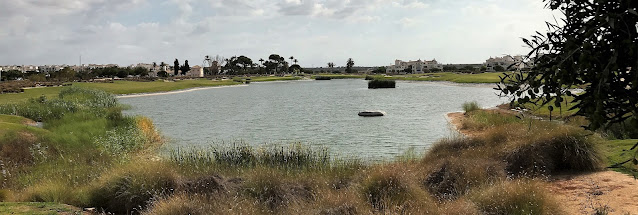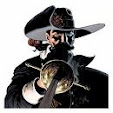English version
Por la costa de California navegó Juan Rodríguez Cabrillo entre 1542 y 1543, descubriendo las bahías de San Diego y Monterey. Tras su muerte de resultas de un enfrentamiento con los indios, la expedición continuó bajo el mando de Bartolomé Ferrelo, que alcanzó el cabo Mendocino y navegó más al norte, por la costa de Oregón.
Desde 1565, los galeones españoles cruzaban el Pacífico entre Acapulco y Manila, una vez al año en cada sentido, iniciando así una primera globalización financiera y comercial entre Asia, América y Europa. El viaje desde Acapulco a Manila duraba unos tres meses y se hacía escala en la isla de Guam. En cambio, la navegación desde Manila a Acapulco era un viaje durísimo que podía llevar de 4 a 6 meses. Cruzaban el Pacífico sin escalas y el primer punto del continente americano que avistaban era el citado cabo Mendocino. A partir de ahí los galeones realizaban una navegación relativamente fácil aprovechando la corriente de California. Encontrar una escala segura nada más cruzar el océano sería de gran utilidad. Los galeones de 1584, 1587 y 1595 llevaban instrucciones de explorar aquella costa, pero no lograron encontrar el refugio deseado.
 |
Durante 250 años, los galeones de Manila navegaron paralelos a la costa de California.
Tornaviaje. Cuadro de Carlos Parrilla Penagos. |
En 1602-1603,
Sebastián Vizcaíno recorrió las mismas costas que Cabrillo, levantando minuciosos mapas, desembarcando varias veces en Alta California y renombrando algunos de los lugares descubiertos por su predecesor. Cuando se vio obligado a regresar por causa del escorbuto,
Martín de Aguilar continuó navegando hasta las costas de Oregón, que fueron descritas por primera vez en su diario.
En 1767, al considerar una amenaza el avance ruso desde Alaska hacia el sur por la costa del Pacífico, el visitador general de Nueva España José de Gálvez promovió la expansión hacia Alta California. Se desempolvaron las cartas de Vizcaíno y en 1769 se enviaron dos expediciones, una por mar desde el puerto de San Blas, en el actual estado mexicano de Nayarit, y otra por tierra desde Baja California. Una vez en Alta California, Gaspar de Portolá partió por tierra desde la bahía de San Diego en busca de la bahía de Monterey, pero donde llegó fue a la bahía de San Francisco. Había pasado desapercibida durante más de dos siglos, no solo a Cabrillo, Ferrelo y Vizcaíno, sino también a los galeones de Manila que, año tras año, navegaban por aquellas aguas.
Las noticias sobre presencia rusa, y también inglesa, al norte del cabo Mendocino hizo que comenzaran una serie de expediciones navales españolas por el Pacífico Norte con los objetivos de reconocer, cartografiar y tomar posesión de las tierras descubiertas.
La primera expedición, capitaneada por Juan Pérez Hernández y con Esteban José Martínez de segundo, se desarrolló en 1774. Ante los limitados resultados obtenidos por las muy adversas meteorología y corrientes, fue necesario organizar otra.
En 1775, la segunda expedición, mandada por Bruno de Heceta y en la que iban Juan Pérez Hernández, el limeño Juan de la Bodega y Quadra y Francisco Antonio Mourelle, descubrió y cartografió la desembocadura del río Columbia. Sobrepasaron el estrecho de Juan de Fuca en el estado de Washington y poco después Heceta tuvo que regresar a causa del escorbuto. De la Bodega y Mourelle continuaron navegando hasta el paralelo 58, ya en Alaska, descubriendo la bahía de Bucarelli.
En 1779, la tercera expedición al mando de Ignacio de Arteaga y Bazán, en la que volvían a tomar parte Juan de la Bodega y Francisco Antonio Mourelle, tenía como objetivos evaluar la penetración rusa en Alaska, buscar el paso del Noroeste (supuesta ruta que permitiría cruzar el continente por el norte, al igual que el estrecho de Magallanes lo hacía por el sur) y capturar a James Cook, si lo encontraban en aguas españolas.
En 1788, la cuarta expedición, capitaneada por
Esteban José Martínez, llegó hasta el fondeadero de la pequeña isla de Nutca, en la costa suroccidental de la isla de Vancouver, donde establecieron el fuerte de San Miguel y el baluarte de San Rafael, adelantándose así a los ingleses. La bandera española ondeó allí hasta 1795, tras firmarse la tercera Convención de Nutca, en cuyas negociaciones
Juan de la Bodega representó a España. Ambas naciones renunciaron provisionalmente a la soberanía de aquel enclave.
 |
| Recalada en Nutca. Cuadro de Carlos Parrilla Penagos. |
Otras expediciones continuaron recorriendo y cartografiando la costa americana del Pacífico Norte hasta Alaska. La de
Alejandro Malaspina y
José de Bustamante (1789-1794), la más importante expedición científica española del siglo XVIII, dio nombre al glaciar Malaspina en Alaska y contactó con los indígenas tlingit, dejando numerosos testimonios pictóricos de los nativos, flora y fauna locales.
Dionisio Alcalá Galiano y
Cayetano Valdés recorrieron la isla de Vancouver.
Salvador Fidalgo construyó en 1791 el fuerte Núñez Gaona (actual Neah Bay) y puso nombres a la bahía de Cordova (con «v» y sin tilde) y al puerto Valdez (Valdés).
Manuel Quimper navegó por el estrecho de Juan de Fuca. En 1792,
Jacinto Caamaño describió minuciosamente la costa sur de Nutca y asignó topónimos españoles. Por último,
Francisco de Eliza y el piloto
Juan Martínez y Zayas reconocieron la desembocadura del río Columbia, el estrecho de Juan de Fuca y la bahía de San Francisco.
La Monarquía hispana continuó considerando aquellos territorios del Noroeste como propios hasta que en 1818 fueron ocupados conjuntamente por Gran Bretaña y los Estados Unidos. Finalmente, España renunció a su soberanía en el Tratado de Adams-Onís de 1819.
 |
Derrota de las corbetas Atrevida y Descubierta de la expedición Malaspina.
Fuente: Iván Hernández Cazorla (Wikimedia Commons). |
Texto extraído y adaptado de
Las raíces hispanas de los Estados Unidos por cortesía de la
Asociación Cultural Héroes de Cavite.



















.png)










.bmp)

.jpg)








